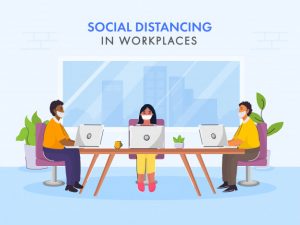About five months ago we heard of a mysterious virus that was causing pneumonia-like symptoms and today, much of the world as we know it has come to a standstill. More than 4 billion people around the world are in some form of lockdown due to the Coronavirus pandemic. But the lockdown is slowly reducing, offices are reopening and many people are rejoining work. India might not yet be in a position to reopen its theatres, schools, and colleges yet, unlike most Western European countries, but that may be possible in the near future.
After a nationwide lockdown, India had relaxed restrictions on farming, banking, and public sector works, but hospitality services, travel, and most businesses remain closed. India was one of the first countries to impose heavy travel restrictions, including suspending most visas and eventually stopping all international flights, it also banned trains and flights within the country when the lockdown began.
So What has changed now?


Apart from the restrictions on both international and certain routes of domestic travel, schools, colleges, cinema halls, and most businesses – except those providing essential services such as groceries, food and essential deliveries, takeaways, pharmacies, etc. will remain shut. All large public gatherings – social, political, or religious – are also still banned.
The government has said it will allow agricultural businesses to open, supermarkets, shops selling farming products – such as fertilizers or machinery, few offices, trucks, trains, and planes carrying cargo and travelers will also be allowed to operate, with half of their staff, Banks have reopened, as well as government centers distributing social security benefits and pensions. Malls and restaurants are also re-opening with regulations in place to work at a lower capacity and with proper distance between tables and seating areas. All are instructed to maintain physical distance and wear masks.
But the government has said none of these new rules will apply in what they call “containment zones” or Red Zones, State and district officials will actively take steps to identify the covid19 hotspots and demarcate such zones, allowing only emergency vehicles, minimum movement, shops or police to enter or leave these areas.
The New Normal. Rules to Follow.

As businesses begin to open up, employers will need to come up with detailed plans to keep workers and customers safe. Use this checklist as a guideline to make the return of work safe and allow the business to function without compromising public health or confidence.
Make a set of “no personal contact” rules

Limit handshaking closed meeting spaces, hugging, or any other physical contact.
Encourage “no item sharing” when possible

This includes things like pens, staplers, notebooks, dry erase markers, desk space, file folders, computers, and anything else that can be assigned to individual workers and will not be shared.
Reorganize your floor plan

What can you do to your workspace that will maximize the 6-foot distance between workers, customers, and visitors? Maybe adjust desks to point towards walls or office partitions to separate individuals.
Get rid of common “gathering” areas

Reallocate communal gathering places for open-air conference space or more roomy desk arrangements.
Close breakroom hangouts

Workers will need breaks, legally and mentally. How will you handle them? These breaks need to be monitored, the staff needs to maintain distance, wash their hands, and wear their masks.
Create prominent hand sanitizing stations, complete with cleaning supplies

Businesses are going to need to invest in the safety equipment of both their workers and patrons to keep the confidence of consumers coming back. If your shop feels risky, shoppers might not return. So make a point to buy hand sanitizers and make them freely available across your business or office space.
Post communal equipment cleaning rules

If your office has common-use equipment (such as copy machines, metal machinery, and industry-specific tools) consider posting clear directions about how to clean the equipment between uses to keep multi-users safe.
Create appropriate face mask rules

States and companies are able to make individual requirements regarding face mask requirements for both staff and customers at all times.
Break the 9-5

Many office members are working from home instead of heading into office 9 – 5 to reduce the chances of infection. Research new ways your staff can communicate during this time to get work done or if going into office is necessary, reduce the hours to 4 or 5.
Then, after you’ve made your new policies …
After you’ve formulated your new policies, it’s critical that you document those policies for employees to access and review. A digital copy makes it easy for a company to update and disseminate information as it changes.

